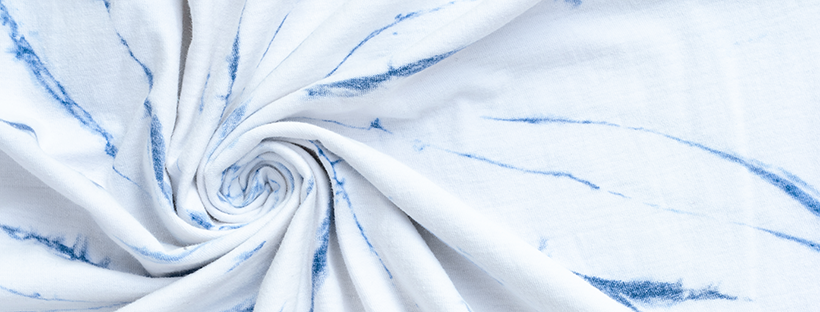
Cool Dyeing
Garment Dyeing is either cool or cold. Pre-made clothing can also be dyed cold with formaldehyde binders and pigments.
Cold Dyed
Oil-dyed garments or oil-washed garments have an oily, dirty and marbled appearance. These garments can be dyed in cold processes at room temperature, with no heating. This is called cold dyeing, or cool dyeing. The garments are dyed at room temperature with the appropriate color pigments and a binder. The result is a special type of batik, grubby, or vintage look for cold- or oil-dyed clothes. Clothing, such as trousers, skirts., jackets., shirts. sweaters or pullovers that are cold dyed have a worn-out, washed out appearance with stains, spots, or color gradients. Also, they tend to be brighter at the seams. Every piece of finished clothing has a unique, individual look.
Modern jacquard fabrics can come in many different materials, including silk, manufactured polyester, and mixed polyester cotton.
What Does Garment Dyeing Really Mean?
Garment dyeing refers to garments such as pants and skirts, jumpers, dresses or coats that are dyed after they have been made. They are typically made of pre-dyed yarns and tailored from piece-dyed fabric. You can create many unique color effects with garment dyeing, respond quickly to new fashion trends and produce more cost-effectively than traditional processing. Also, lead times are shorter. Because of today’s short collection cycles colors can quickly become out-of-fashion. It is possible to avoid large stockpiles of old colors by using garment dyeing.
Our Product Recommendation For Cold Dyeing
Pre-washing is followed by dyeing the ready-made garments. The garments can be washed at room temperature in a garment washer with a liquor that contains PERICOLOR P colors as well as a formaldehyde and acrylate-free binder such as PERIPRETSKV, PERIPRETHKV. After the pigment liquor has been drained, the garments are spun and dried.
